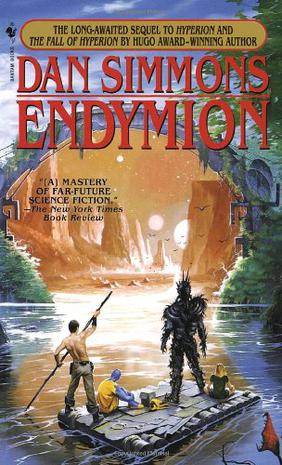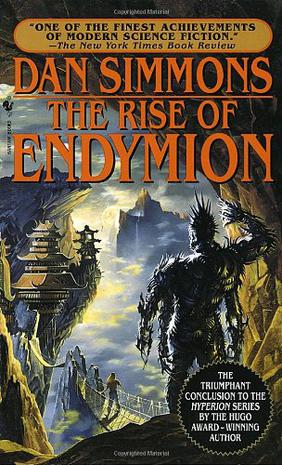The Terror
Dan Simmons
The fate of Sir John Franklin's last expedition remains one of the great mysteries of Arctic exploration. What we know, more or less, is this: In the balmy days of May 1845, 129 officers and men aboard two ships -- Erebus and Terror -- departed from England for the Canadian Arctic in search of a Northwest Passage to the Pacific. They were never heard from again. Between 1847 and 1859, Franklin's wife pushed for and funded various relief missions, even as the expectation of finding survivors was replaced by the slim hope for answers.
It's a story perfectly suited for fiction, if only because we have so little else to go on. Dan Simmons's new novel, The Terror, dives headlong into the frozen waters of the Franklin mystery, mixing historical adventure with gothic horror -- a sort of Patrick O'Brian meets Edgar Allan Poe against the backdrop of a J.M.W. Turner icescape. Meticulously researched and brilliantly imagined, The Terror won't satisfy historians or even Franklin buffs, but as a literary hybrid, the novel presents a dramatic and mythic argument for how and why Franklin and his men met their demise.
The book opens well into the middle of things, at the onset of the ships' third winter beset in sea ice. Months after Franklin's own death, his second-in-command is now in charge. Gothic imagery pervades, as "Captain Crozier comes up on deck to find his ship under attack by celestial ghosts." This "attack" turns out to be an artful description of the aurora borealis, though Simmons never tells us that directly. Indeed, the power of his metaphoric language comes from the archetypal superstitions of the crew, who, despite their anchor of Protestant Christianity, are a pagan lot deep down.
But the crew's belief in witches and magic may or may not explain their main fear: a "Thing on the ice" that stalks, beheads, eviscerates and otherwise kills off crewmen one by one. For 200 pages or so, we aren't sure if this beast is a figment of their overactive imaginations, maybe a giant polar bear or a yeti of Northern lore, a monster suggesting the "beastie" of Golding's Lord of the Flies -- the terror within -- or Beowulf's Grendel, not to say Grendel's mother -- a preternatural, evil intelligence bent on destruction.
Faced with mutinous threats, general starvation, intense cold and something wrong with their tinned food supply (scurvy and lead poisoning appear rampant), Crozier provides leadership without arrogance. As the novel's protagonist, he is a man of the people, a realist, unlucky in love. As an Irishman in the British Royal Navy, he has been largely ignored by the Admiralty despite his stoic competence.
By contrast, Franklin represents most of what was wrong in early British Arctic exploration. His prior expeditions had met with minimal success, making him best known in England as "the man who ate his shoes," though given all the other things men ate to stay alive on Arctic expeditions, it's unclear why shoe leather would be singled out for ignominy. Goaded by his very public failings, Franklin retained his penchant for arrogant idealism and wasteful ritual. He brought along fine china and monogrammed silverware, among other "necessities." In the end, his primary mistake is cultural: Out of xenophobia he refuses to adopt local methods of travel, shelter and hunting. Yet to say that Sir John gets his just deserts is unfair if only because 128 others suffer the same fate.
Crozier recognizes the captain's weaknesses, and therein lies the novel's poignant sense of loss. He dispenses shipboard justice out of practical necessity rather than lofty idealism. In their desperate hours, he preaches not from the Bible favored by Franklin but from the "Book of Leviathan" -- his own recitations from Thomas Hobbes, which, among other things, explains the birth of superstition and religion: "There was nothing which a Poet could introduce as a person in his Poem, which [man] did not make into either a God or a Divel." As the novel descends toward its hellish climax, the "Divel" chasing our crew -- that "Thing on the ice" -- transcends its monstrous nature and becomes the manifestation of earthly retribution, wild payback for the hubris of Western civilization.
The vehicle of that transcendence is Lady Silence, a mute Inuit girl who lives on the ship and goes at her own whim, providing a portal to Eskimo mythology and shamanism. Northern spiritual philosophy gives the world -- and this novel -- its ultimate balance, predicting the coming of kabloona ("pale people"), whose arrival brings "drunkenness and despair," melts the sea ice, kills off the white bear and calls forth the "End of Times." While Franklin's men are unable to escape the realities of starvation, brutal cold and the violent urge, Crozier's instinct for survival pushes the novel to its ethereal end.
This mix of historical realism, gothic horror and ancient mythology is a difficult walk on fractured ice, and anyone without Simmons's mastery of narrative craft would have undoubtedly fallen through. Despite its Leviathan length, The Terror proves a compelling read, while making the average meal consumed by the average American seem a precious gift from warm-weather gods.


